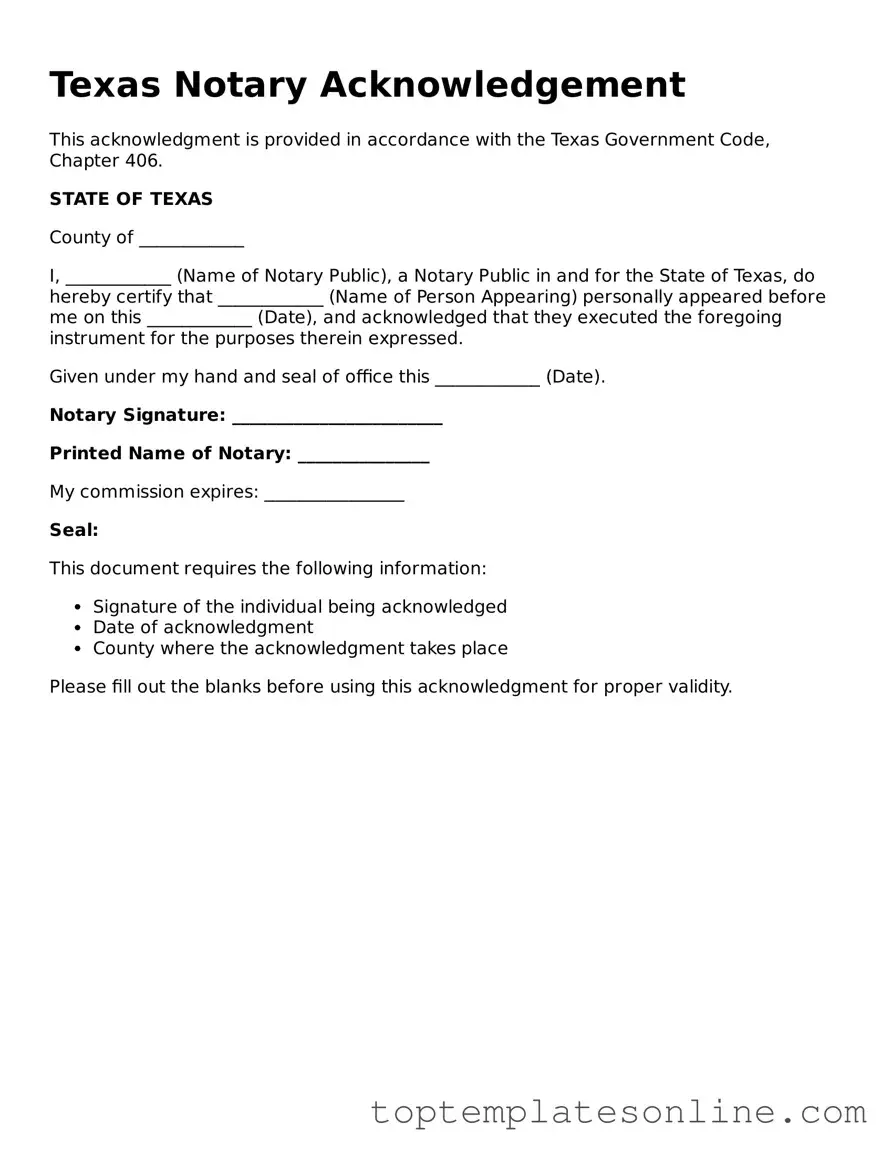Blank Notary Acknowledgement Template for Texas State
The Texas Notary Acknowledgement form is a legal document that confirms the identity of a signer and the voluntary nature of their signature. This form serves as an essential tool in ensuring that documents are executed properly and can be relied upon in legal proceedings. Understanding its purpose and proper usage can help individuals navigate important transactions with confidence.
Customize Notary Acknowledgement Here
